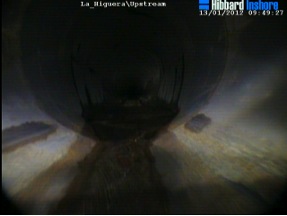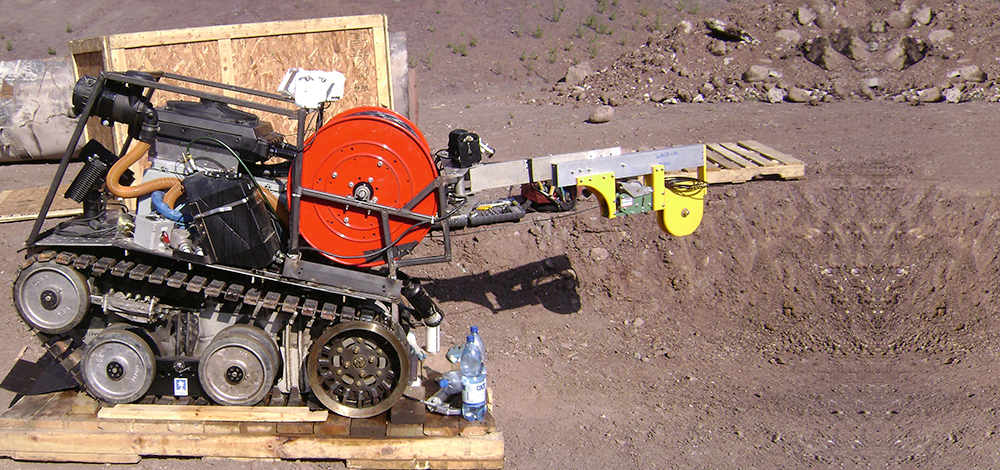Crawler Inspection of a Dry Tunnel with a Known Failure
Hibbard Inshore was contacted by a customer in South America to perform a dry inspection of a partially collapsed tunnel. The tunnel had already been dewatered, and a major collapsed section of the tunnel could be seen from the upstream end. The customer wanted to establish if there were additional collapses of the tunnel downstream of the known collapse so that they could plan for the tunnel repair. If downstream collapses also existed, it would stand to reason that water may be trapped between the collapsed sections making manned entry from the downstream end unsafe. So, in order to establish if there were sections of additional collapse, the client hired Hibbard Inshore to modify their large crawling remotely operated vehicle (ROV) to be able to crawl 4 kilometers through dry tunnel. The vehicle was to be able to climb over debris with up to a 12” (30 cm) shear face. To prepare the ROV for inspection, Hibbard’s team improved its stability on top of debris and lengthened its tether system. In the past, Hibbard Inshore had also used a 3D survey laser on this vehicle to determine volumes of collapsed material, but the customer determined that video would suffice in this case.
 Transition from Culvert to Tunnel
Transition from Culvert to Tunnel
The use of an ROV allowed the client to safely identify that much of the downstream tunnel was clear although there was significant water pooling as the crawler neared the collapse region indicating an uneven grade in the tunnel. With the inspection data provided, the client was able to make informed decisions on the methods of repair that would be used to rehabilitate the tunnel.

